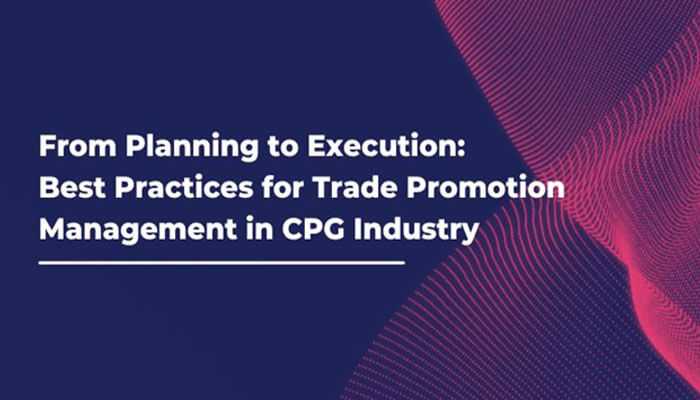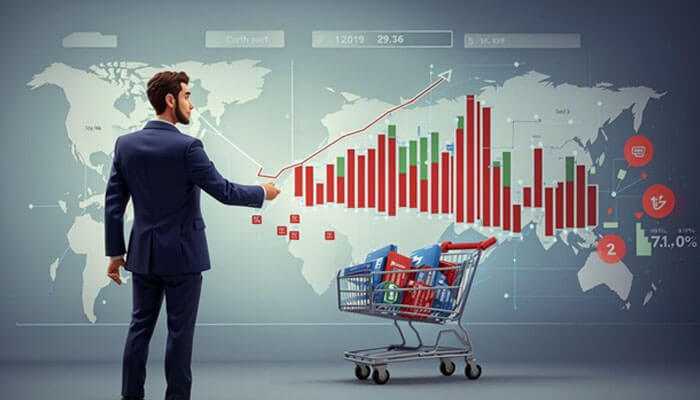“An amazing 42% of all CPG sales are influenced by promotions, highlighting their critical role in driving revenue and market share. Yet, 35% of promotion funds are wasted due to ineffective planning and execution.” – Mckinsey. Trade promotion management in CPG industry have long been a foundation of sales strategy in the pacing Consumer Packaged Goods industry. But, balancing the competing priorities of different departments – from building brand equity and optimizing costs to driving revenue and market share – has often been a complex thing.
The stakes are high!
Presently, data has emerged as a robust catalyst for changing this challenge into a strategic benefit. By harnessing the power of AI and data science, CPG companies can unlock invaluable insights to optimize trade promotions, enhance ROI, and drive superior growth.
This blog will navigate you into the intricate dynamics of trade promotion management in CPG industry and highlights some best practices leading CPGs to adopt to stay ahead in today’s data-centric marketplace.
Why is Trade Promotions Management more crucial than ever?
In the present scenario, numerous changes are observed in consumer behaviour, and the retail sector has put sheer pressure on CPG brands, signifying how power is slightly shifting from CPG companies toward consumers and retailers. Here are the shifts:
Shift#1: Consumers have gained more robustness and ventured off the conventional linear path for purchasing. They now navigate a multi-channel buying journey, prioritizing cost over brand loyalty. With widespread digitization, price transparency has increased, enabling easier comparisons. This shift creates uncertainty for manufacturers, as consumers are less predictable in their spending on branded products.
Shift #2: Retailers increasingly emphasize private label products, aiming to strengthen their bargaining power with premium brands. They’re adding exclusive items and frequently refreshing their product range to stand out. With fluctuating input costs, manufacturers face intense pressure to boost margins and compete in the pricing war to secure product shelf space.
Shift #3: The evolving retail landscape, with new channels like e-commerce and convenience formats, demands manufacturers manage promotions more effectively. As channels diversify, competition for shelf space intensifies, making trade promotions crucial. Despite the complexity, trade promotions offer untapped potential for a win-win scenario between retailers and manufacturers. Utilizing trade promotion analytics in CPG industry, CPG companies can gain insights to refine promotion designs, benefiting both parties and strengthening their partnership.
Highlighting these shifts, adopting best practices in Trade Promotion Management in CPG industry is not just advisable but the need of the hour. Let’s explore some significant best practices that can assist brands navigate the complexities of modern trade promotions and achieve better outcomes.
Best Practices for Maximizing ROI in Trade Promotion Management
#1 Develop a Data-Driven Strategy
The foundation of successful TPM lies in deploying data to inform decision-making. Organizations can build more effective and targeted promotional strategies by analyzing market trends, consumer insgihts, and historical promotion data.
Key steps include:
- Implementing robust data collection systems across all channels
- Utilizing advanced analytics tools to identify patterns and trends
- Using external data sources (e.g., weather patterns, economic indicators) for a more granular view
A data-driven approach can assist with better resource allocation, accurate forecasting, and the capability to swiftly adapt to changing market dynamics.
#2 Set Clear Objectives and KPIs
Before launching any trade promotion, it’s significant to establish transparent objectives and KPIs. This makes sure that all stakeholders are aligned and offers a framework for measuring success.
| Common objectives might include | Corresponding KPIs could be |
| ✔ Increasing market share
✔ Driving volume sales ✔ Improving product visibility ✔ Enhancing retailer relationships |
✔ Sales lift
✔ Return on investment (ROI) ✔ Incremental revenue ✔ Display compliance rates |
By setting specific, measurable goals, CPG brands can evaluate the success of their promotions and make data-driven decisions for future campaigns on the go.
#3 Optimize Promotion Mix and Timing
Not all promotions are curated equally. To climb the ROI, searching for the right mix of promotion types and timing is boon. This involves:
- Analyzing the performance of different promotion types (e.g., temporary price reductions vs. display promotions)
- Considering seasonality and other external factors
- Balancing short-term sales boosts with long-term brand-building
- Avoiding promotion issues by varying offers and timing
For instance, a CPG company might find in-store demos highly effective for new product launches, while loyalty program incentives work better for driving repeat purchases of established products.
#4 Increased Collaboration with Retailers
Robust partnerships with retailers are significant for successful trade promotions. Best practices include:
- Regular communication and data sharing
- Joint business planning (JBP) sessions to align objectives and strategies
- Providing retailers with promotional tools and resources
- Providing customized promotions that meets retailers’ specific requirements and customer bases
By working closely with retailers, CPGs can ensure the better execution of promotions, seamless customer experience, and improved in-store visibility.
#5 Leverage AI & ML driven planning and forecasting tools
Modern TPM requires sophisticated planning and forecasting capabilities. Embedding AI and ML solutions can help companies:
- Create more accurate demand forecasts
- Model different promotion scenarios
- Optimize pricing and discount levels
- Manage trade spend budgets more effectively
These solutions incorporate machine learning algorithms that improve over time, leading to increasingly accurate predictions and recommendations.
#6 Conduct a Thorough Post-Promotion Analysis
After each promotion, it’s significant to do a in-depth analysis to know its effectiveness and identify areas for improvement. This analysis should include:
- Comparing actual results to forecasted performance
- Calculating ROI and other key metrics
- Identifying factors that contributed to success or underperformance
- Gathering feedback from sales teams, retailers, and consumers
These insights can then refine future promotional strategies and improve overall TPM effectiveness.
Final Thoughts
By applying these best practices, brands can stay attuned to emerging trends, brands can also improve their TPM ROI, build stronger relationships with retailers & consumers, and drive sales growth.
At Polestar Solutions, we offer CPG organizations with a fully integrated and connected suite of RGM and TPM solutions powered by AI & ML capabilities. Our industry-leading functionality is designed to address real-world challenges in TPM, TPO, and RGM, offering you practical and effective problem-solving tools. Try it today!



